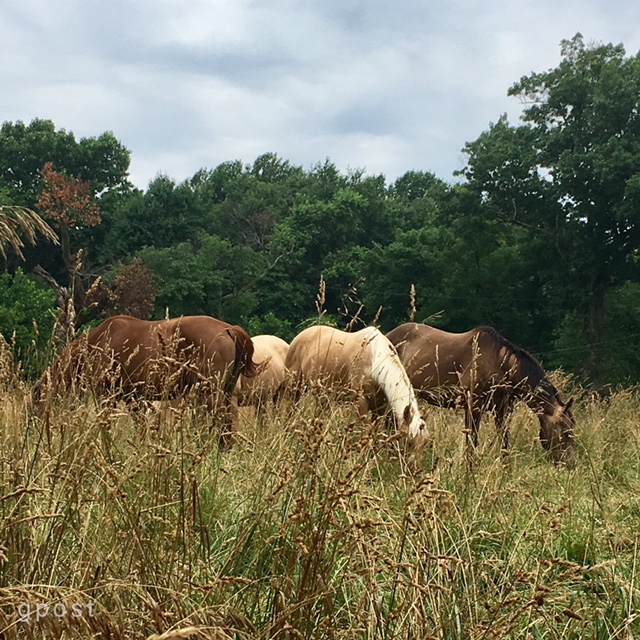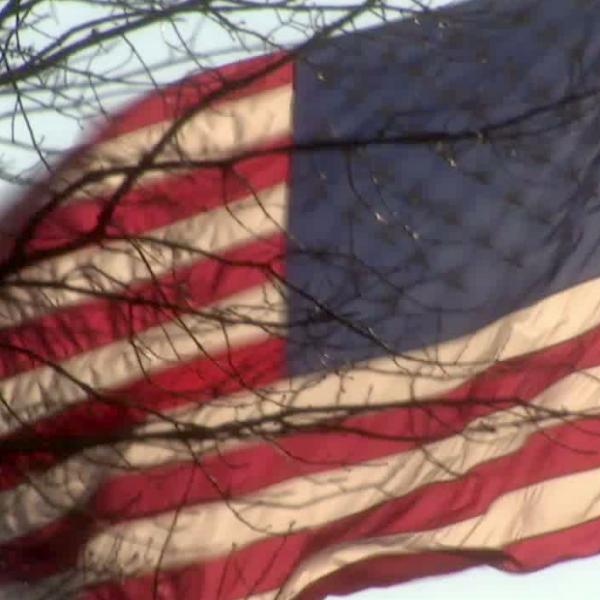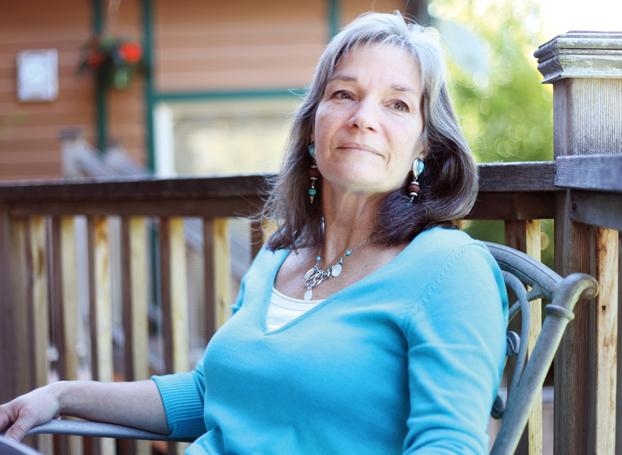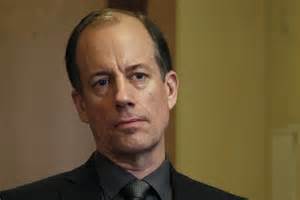
One way to get out of the box that’s dominated by our value judgments is to make an imaginative leap, like taking on the perspective of someone we admire, and trying to see a situation—it can be any situation where we’re already convinced of our righteousness—through their eyes.
Value choices fuel our strongest commitments, but the deep, subconscious motivations behind them can also close off disagreeable viewpoints before we’ve ever had an opportunity to consider them rationally. Once my moral intuitions are engaged, feeling like I’ve actually made up my mind is just that—a feeling.
It takes an effort to keep yourself open for long enough that your rational side can go to work. In fact, it’s probably fair to say that your mind is never truly open unless you’re consistently making an effort to stay open-minded.
Trying on a truly admirable perspective further improves your chances of broadening the moral framework that determines what you think, feel and end up doing about it.
Being Open-Minded Rarely “Just Happens”
First off, you have to decide that you really want to see old things in a new way, a suitable endeavor for any new year. It’s being willing to leave the garden of moral certainty that you’ve created for yourself behind—this gated community where everything that you believe feels grounded in Truth, while looking well-tended and -considered to everyone whose opinion matters.
Truly inhabiting another’s perspective takes repeated reminders to keep your doors and windows open. Trust me, without these markers it’s easy to lose track of your ambition and get “bogged back down” in the prejudices you are trying to escape.
A nagging suspicion that your certainties no longer explain every corner of the world you’re experiencing is a catalyst too.
It also helps when you are opening yourself to the perspective of someone you already acknowledge as a moral leader, even though you suspect you might disagree with some (or even a great deal) of what he or she stands for.
In short, the promise of growth through openmindedness requires your will as well as your imagination. You have to be dubious enough about your own moral certainties and willing enough to see the world through, say, Martin Luther King’s eyes, that you’ll actually make the effort to do so.
Yes. My suggestion today, on this day before we honor him, is to try to see your judgments and convictions about life and work through Martin Luther King’s eyes.
But First, a Brief Look At Some of What MLK Stood For
Most who were alive when Martin Luther King was assassinated are now more than 30 years older than King was when he died. They remember him with teenage and grade-school memories because few who are alive today ever reached mature judgments about him while he walked among them.
As a result, in the years since his assassination in 1968, MLK has often been appropriated by those who have attempted to pour his life or words into what they stand for instead of what he did. Taking heroic figures from the past and making them serve current agendas often distorts their legacies. For example, while MLK spoke passionately about the white racism that held his people down, he also spoke about anti-social behavior in poor black communities, telling a black congregation in St. Louis that “we’ve got to do something about our moral standards” as well.
We know that there are many things wrong in the white world, but there are many things wrong in the black world too. We can’t keep on blaming the white man. There are things we must do for ourselves.
He repeatedly urged his young followers to assume responsibility for their actions despite the racial barriers they confronted. While not always succeeding, King always tried to be “color-blind” by holding every combatant in the struggle for civil rights accountable for what they said and did. He was also convinced that everyone–black and white–shared a basic decency, even when their words and deeds suggested otherwise.
This is why one black commentator lamented the divisive way in which at least some of King’s legacy is being distorted today:
A generation of blacks who have more opportunity than any previous generation are being taught that America offers them little more than trigger-happy cops, bigoted teachers and biased employers. It’s not only incorrect, but as King and a previous generation of black leaders understood, also unhelpful.
Why unhelpful? Because it denies that MLK saw “a unity among people” that goes deeper than their actions and provides the ground for hope that’s essential to problem-solving and reconciliation.
Another part of King’s legacy—and one that the passage of time has been less able to distort—is the power and eloquence of his conviction that better days are coming.
Martin Luther King (like Lincoln and Churchill before him) understood that people need to be stirred to appropriate action during times of upheaval. As much as anything, it was his beautiful words, beautifully delivered, that drove the Civil Rights Movement and continue to inspire us today. It’s a rare feat when you’re able to carry the hopes of a crowd or a nation on the shoulders of your words.
Another thing is also true of great leaders like MLK. It is never just about how to resist your personal fears or hostile forces that are beyond your control. It is also about how you and your opponents can recover so that you’ll both be strong enough to confront the aftershocks of your discord together.
While MLK never stopped challenging injustice, he also never waivered in his vision of a better America at the other end—a hope that he struggled mightily to personify. We remember his resistance today, but what we sometimes forget was his ability to balance his challenge to racial injustice with a restorative view of the future. For him, the anguish of non-violent protest and the hostility it unleashed were almost always relieved by his belief in human decency and our ability to overcome what divides us. It’s the dream that sustained him as he marched doggedly forward.
Martin Luther King’s charge that we should always face what’s coming “now,” “next” and “ultimately” reminds us of Lincoln during the slog of the Civil War and Churchill through the long nights when England was bombed during World War II. It was his ability to affirm our basic decency and resilience at each stage of his resistance that can continue to rally us today.

A Stirring Proposal
To get out of our moral comfort zones, the proposal is to try-on MLK’s perspective. As in these pictures from the sidewalks of NYC’s Upper East Side, the recommendation is for purposeful wandering beyond the confines of the tidy borders and careful gardens that our value judgments have arranged for us. In other words, you become (for awhile) the dogs and dog walkers in this scenario, sniffing around the edges of what we believe and finding out whether we can be more open to those who disagree with our views about what is right and true.
Trying on Martin Luther King’s perspective wasn’t my idea. It comes from Cornel West and Robert George, both at Princeton, where West teaches something called “the practice of public philosophy” and George teaches jurisprudence. In a “Houses of Worship” column of the Wall Street Journal, they wrote as follows:
One of us invokes “the radical King” in criticizing empire, capitalism, and white supremacy. The other recalls King’s principles in defending the unborn, Down syndrome and other disabled people, the frail elderly, and every life…
[Because of the range and depth of his views], in judging and acting, we must avoid sinning against King’s legacy by facilely claiming him for whatever policies we favor. A more fitting attitude, one consistent with what was truly radical about King, is to imagine him as a critic: “If Martin Luther King would be on the other side of where I happen to be on this question—why?”
This self-critical stance honors King by recognizing the centrality of his Christian faith to his work and witness…
King was truly radical in his literal reading of Jesus’ command that we love others unconditionally, selflessly and self-sacrificially. And by “others,” he meant everyone—even those who defend injustice. He believed in struggling hard, and with conviction, for what one believes is right; but he equally insisted on seeing others as precious brothers and sisters, even if one judges them to be gravely in error…
King saw himself as the leader of a love-inspired movement, not a tribe or “identity group,” and that is because his radical love ethic refused to divide people into tribes and identity groups.
You can read the West-George piece here. I also propose, with its authors, that you put MLK inside your head and imagine that he’s your interlocutor.
“If Martin Luther King would be on the other side of where I happen to be on this question—why?”
You might be surprised where this act of the imagination takes you, and how quickly the moral barriers between you and those you disagree with so fervently might start to come down.
More of King’s Words
What made me write about King today was seeing a new documentary about the days in Memphis before his assassination, hearing part of his last speech at the Mason Temple on April 3, 1968, and then sitting in one place and listening to everything he said that night, from start to finish.
It’s a long speech, almost 45 minutes, but the singles, doubles and triples he sends into the choir with that sonorous voice—like “if only he’d sneezed,” so close was the knife when someone tried to kill him once before—issue forth with a kind of inevitability until his final grand slam and onto that fateful next day. It’s magnificent.
And here’s why. Not only does it consistently bridge his now, his next and his ultimately with what he calls “a dangerous unselfishness,” it also demonstrates how much Martin Luther King was living his own words.
Little was going well for King in Memphis that week. There were constant death threats against him and it must have been unsettling for him to even go out his door every morning. It wasn’t just the courage that it took to march on the City’s mean streets, he also had to look brave when he knew that he might be dead by the end of the day. It was the oppressiveness of his mortality that elevated his last words—how he embodied it and then rose above it, right before the eyes of those who had come to see him.
If you want another reason to let Martin Luther King act as a voice in your head, listen to this speech. It’s a privilege to be in the same room with him just hours before he died, hearing him live the words that hitched his own fears to a sturdier promise.

A Walk Outside The Lines
The pictures above convey the wonderful orderliness of my moral perspectives too. What’s right and what’s wrong for me is always so certain, arranged and impervious to the lifted leg of anyone who falls outside of it.
I’m for this, so I also against that and that and that: all neat and comfortable and predictable. But isn’t life messier and more interesting than that?
My self-esteem depends on projecting the best moral viewpoint I can come up with so I can be proud of what I stand for and admired by my fellow believers for our shared truths. But doesn’t our self-esteem become ossified and brittle when we keep it in such tidy containers?
On this or this or that, how might MLK see “what I’m so sure about” quite differently than I do?
This post was adapted from one I wrote two years ago but wished, at the time, I had posted closer to Martin Luther King Day when this great man is already on our minds. In addition because I was so challenged by Cornel West’s and Robert George’s suggestion, I wrote about another one of their efforts to find unity despite our deepest disagreements last February. Here’s a link to it.
A newsletter that included this post was sent to subscribers on January 19, 2020. Newsletters go out every Sunday morning and, from time to time, I post the content here as well. If you want to subscribe to my weekly newsletter, please provide your email address in the column to the right.





